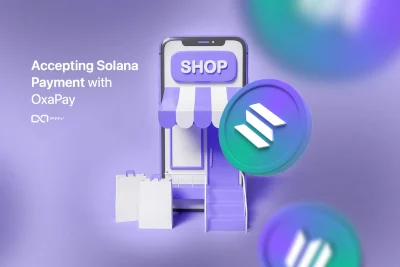Las criptomonedas se han convertido en una alternativa práctica a las finanzas tradicionales, permitiendo transacciones globales, nuevas formas de inversión y herramientas financieras descentralizadas. Desde el lanzamiento de Bitcoin en 2009, han surgido miles de activos digitales, cada uno con su propio diseño, propósito y tecnología. Esta guía explora los diferentes tipos de criptomonedas, desde Bitcoin hasta stablecoins y tokens de privacidad, y muestra cómo se utilizan actualmente para las finanzas personales y la integración empresarial a través de plataformas como [nombre de la plataforma]. OxaPayy una participación más amplia en el ecosistema de las criptomonedas.
¿Qué son las criptomonedas?
Las criptomonedas son monedas digitales o virtuales que utilizan criptografía para transacciones seguras. A diferencia de las monedas fiduciarias tradicionales controladas por los bancos centrales, las criptomonedas operan en redes descentralizadas denominadas blockchains. Esta naturaleza descentralizada garantiza la transparencia, la seguridad y la autonomía financiera, permitiendo transacciones sin intermediarios como los bancos.
Explicación sencilla: Las criptomonedas son como dinero digital que se puede usar en línea. Códigos secretos protegen estas monedas digitales, y una red compartida las almacena, lo que garantiza que ninguna persona u organización pueda controlarlas.
¿Qué es una cadena de bloques?
A Cadena de bloques es como un diario público que todo el mundo puede ver pero nadie puede borrar. Realiza un seguimiento seguro de cada transacción, garantizando la transparencia y la seguridad. Cada transacción se añade como un nuevo "bloque" a la cadena, creando un registro permanente y a prueba de manipulaciones. Esta tecnología sustenta todas las criptomonedas, permitiendo la confianza en un entorno sin confianza.
Términos clave:
- Descentralizado: No está controlada por ninguna autoridad central.
- Criptografía: Método de protección de la información mediante códigos secretos.
- Minería: Proceso de creación de nuevas monedas mediante potentes ordenadores.
- Cartera: Una aplicación o dispositivo digital que almacena de forma segura tus criptomonedas.
- Contratos inteligentes: Contratos automatizados en los que las condiciones se escriben directamente en el código.
- Estacas: Ganar recompensas guardando criptomonedas en un monedero.
- Agricultura de rendimiento: Generar rendimientos prestando o apostando criptoactivos.
Breve historia de las criptomonedas
Aunque la idea de las monedas digitales surgió en la década de 1990 a través de proyectos como DigiCash y Bit Oro, No fue hasta 2009 que Bitcoin, creada por el seudónimo Satoshi Nakamoto, se convirtió en la primera criptomoneda verdaderamente descentralizada. Desde entonces, el panorama criptográfico ha evolucionado rápidamente. Por ejemplo, Ethereum introdujo los contratos inteligentes y Litecoin ofreció mayor velocidad de transacción. Además, las monedas estables como Tether surgieron para mitigar la volatilidad de los precios, mientras que las criptomonedas centradas en la privacidad, como Monero y Zcash, priorizaron el anonimato. Hoy en día, las criptomonedas se han expandido más allá de los pagos, impulsando la innovación en diversos sectores a través de plataformas DeFi, NFT y activos digitales globales.

Tipos de criptomonedas
Las criptomonedas pueden clasificarse en varios tipos, cada uno con características y casos de uso distintos. Comprender estos tipos es esencial para seleccionar la criptomoneda adecuada para necesidades específicas, ya sea para invertir, realizar transacciones diarias o explorar nuevas tecnologías.
Bitcoin (BTC): La primera criptomoneda
Bitcoin es la criptomoneda original y sigue siendo el activo digital más reconocido. A menudo denominado "oro digital", Bitcoin se creó para servir de alternativa descentralizada a las monedas fiduciarias tradicionales. Funciona con monedas fiduciarias tradicionales. Funciona en un blockchain de prueba de trabajo (PoW)donde los mineros validan las transacciones y aseguran la red.
Nota para principiantes:
Bitcoin es como una versión online del dinero en efectivo. Se puede enviar a cualquier persona del mundo sin necesidad de un banco, pero solo habrá 21 millones de Bitcoins, lo que ayuda a mantener su valor.
Las altcoins y su papel en el criptoecosistema
Altcoins se refiere a todas las criptomonedas distintas de Bitcoin. Estas monedas a menudo pretenden abordar retos específicos o introducir nuevas características no disponibles con Bitcoin.
Ethereum (ETH):
Como una tienda digital de aplicaciones, Ethereum permite a los desarrolladores crear aplicaciones descentralizadas (dApps) utilizando contratos inteligentes. Pasó de ser un PoW a un prueba de participación (PoS) mejorando la escalabilidad y reduciendo el consumo de energía.
Litecoin (LTC):
Conocido como el primo más rápido de Bitcoin, Litecoin ofrece tiempos de transacción más rápidos y un algoritmo hash diferente, por lo que es más adecuado para transacciones pequeñas.
Ondulación (XRP):
Actúa como un sistema global de transferencias bancarias, centrándose en transacciones transfronterizas rápidas y de bajo coste. La tecnología de Ripple es ampliamente utilizada por las instituciones financieras para las remesas internacionales.
Otras altcoins:
Entre ellas se encuentran Cardano (ADA), Polkadot (DOT) y Solana (SOL), cada una dirigida a sectores específicos como financiación descentralizada (DeFi) y fichas no fungibles (NFT).
Monedas estables: Tether (USDT), USD Coin (USDC)
Las stablecoins son criptomonedas diseñadas para mantener un valor estable al estar vinculadas a activos tradicionales como el dólar estadounidense o el oro. Estos activos digitales combinan la estabilidad de las monedas fiduciarias con las ventajas de las criptomonedas, como la rapidez de las transacciones y la accesibilidad mundial.
Analogía simple:
Las stablecoins son como dólares digitales; su valor se mantiene cercano a $1, ofreciendo un refugio seguro en el volátil mercado de criptomonedas. Tether (USDT) y Moneda USD (USDC) se encuentran entre las stablecoins más utilizadas en el comercio y como medio de envío de remesas.
Monedas Meme: Dogecoin (DOGE), Shiba Inu (SHIB)
Monedas meme empezaron como bromas en Internet, pero adquirieron valor en el mundo real gracias al apoyo de la comunidad y al revuelo de las redes sociales. Dogecoin, por ejemplo, se creó inicialmente como una parodia, pero ahora se utiliza ampliamente para microtransacciones y propinas en línea.
Visión de principiante:
Las meme coins son como memes de Internet que se han hecho tan populares que se han convertido en dinero real. Su valor suele depender más de las tendencias en línea que de la innovación técnica o de casos de uso concretos.
Monedas de privacidad: Monero (XMR), Zcash (ZEC)
Las monedas de privacidad dan prioridad al anonimato y a las transacciones imposibles de rastrear. A diferencia de Bitcoin, donde las transacciones son visibles públicamente en la cadena de bloques, las monedas de privacidad utilizan criptografía avanzada para ocultar los detalles de las transacciones.
Monero (XMR):
Se centra en el anonimato total ocultando el remitente, el destinatario y el importe de las transacciones.
Zcash (ZEC):
Ofrece tanto transacciones transparentes como protegidas, lo que permite a los usuarios elegir el nivel de privacidad que prefieran.
Estas monedas son especialmente atractivas para los usuarios que valoran la confidencialidad, aunque también se enfrentan a un escrutinio normativo debido a su posible uso indebido.
Fichas de utilidad y fichas de seguridad
Fichas de utilidad:
Estos tokens proporcionan acceso a servicios específicos dentro de un ecosistema blockchain, de forma muy parecida a una entrada que da acceso a un concierto. Por ejemplo, Binance Coin (BNB) ofrece tarifas reducidas en la plataforma de intercambio de Binance.
Fichas de seguridad:
Representan la propiedad de un activo del mundo real, como acciones, bienes inmuebles o bonos. Estos tokens suelen estar sujetos al cumplimiento de la normativa, por lo que son similares a los valores tradicionales pero en formato digital.
Monedas digitales de bancos centrales (CBDC)
Las CBDC son formas digitales de la moneda fiduciaria de un país, emitidas y reguladas por los bancos centrales. Su objetivo es combinar la seguridad y la eficiencia de las criptomonedas con la estabilidad y la supervisión de los sistemas financieros tradicionales.
Ejemplos de CBDC:
- Digital Yuan (China): Actualmente en pruebas a gran escala con el objetivo de digitalizar las transacciones en efectivo.
- Euro Digital (Europa): Propuesto por el Banco Central Europeo para modernizar la infraestructura de pagos de la eurozona.
- Corona sueca: Un proyecto piloto para ofrecer un complemento digital al efectivo físico.
Los CBDC podrían transformar la aplicación de la política monetaria, aumentar la eficiencia de los pagos y mejorar la inclusión financiera.

Diferencias clave entre las criptomonedas
Las criptomonedas varían mucho en sus tecnologías subyacentes, velocidades de transacción, comisiones y casos de uso. Comprender estas diferencias puede ayudar a los usuarios a seleccionar la mejor criptomoneda para sus necesidades específicas, ya sea para invertir, realizar transacciones o explorar las finanzas descentralizadas (DeFi).
1. Mecanismos de consenso: Proof of Work (PoW) vs. Proof of Stake (PoS)
- Prueba de trabajo (PoW): Requiere potencia de cálculo para validar las transacciones mediante minería. Bitcoin y Litecoin utilizan este método, que es seguro pero consume mucha energía.
- Proof of Stake (PoS): En lugar de minar, los validadores se eligen en función del número de monedas que poseen y que están dispuestos a "apostar" como garantía. Este método, utilizado por Ethereum 2.0 y Cardano, es más eficiente energéticamente y escalable.
2. Velocidad de las transacciones y comisiones
La velocidad y los costes de las transacciones varían considerablemente de una criptomoneda a otra. Por ejemplo:
- Bitcoin: Tarda unos 10 minutos por transacción, y las tarifas fluctúan en función de la demanda de la red.
- Ethereum: Procesa las transacciones en 15 segundos, pero las tasas de gas pueden ser elevadas en caso de congestión de la red.
- Ondulación (XRP): Conocida por sus transacciones casi instantáneas con comisiones mínimas, lo que la hace ideal para pagos transfronterizos.
- Stablecoins: Como USDT y USDC, ofrecen transacciones rápidas con costes predecibles.
Comisiones por transacciones criptográficas: Cómo calcular y reducir sus costes
3. Tabla comparativa de las principales criptomonedas
| Criptomoneda | Mecanismo de consenso | Velocidad de transacción | Principales casos de uso |
| Bitcoin (BTC) | Prueba de trabajo | ~10 minutos | Depósito de valor, Pagos |
| Ethereum (ETH) | Prueba de participación | ~15 segundos | Contratos inteligentes, DeFi |
| Ondulación (XRP) | Protocolo de consenso | ~4 segundos | Pagos transfronterizos |
| Tether (USDT) | Moneda estable | Rápido | Depósito de valor estable |
Usos prácticos de las criptomonedas
Las criptomonedas han evolucionado más allá de los pagos digitales, ofreciendo diversas aplicaciones en varios sectores. Estos son algunos de los usos más prácticos:
Pagos cotidianos y comercio electrónico
Muchas empresas, incluidos los principales minoristas en línea, aceptan criptomonedas como forma de pago. Empresas como Microsoft, AT&T y Overstock han integrado los criptopagos, lo que permite a los clientes adquirir bienes y servicios utilizando Bitcoin y otros activos digitales. Pasarelas de pago como OxaPay facilitan a las empresas la integración de los pagos criptográficos en sus sistemas, ampliando su base de clientes y reduciendo las comisiones por transacción.
Oportunidades de inversión y comercio
Las criptomonedas se han convertido en una clase de inversión muy popular, que ofrece oportunidades de negociación y tenencia a largo plazo. Los operadores aprovechan bolsas como Binance, Coinbase y Kraken para comprar, vender y mantener criptodivisas. Además, estrategias avanzadas como estaca y rendimiento agrícola permiten a los inversores obtener ingresos pasivos participando en plataformas financieras descentralizadas (DeFi).
Transacciones transfronterizas y remesas
Las criptomonedas permiten transferencias internacionales de dinero rápidas y de bajo coste. Los servicios tradicionales de envío de remesas suelen cobrar comisiones elevadas y tardan días en procesarse, mientras que las criptomonedas pueden facilitar transacciones instantáneas con costes mínimos. Ripple (XRP) y stablecoins como Tether (USDT) son particularmente populares para este caso de uso.
Aplicaciones comerciales: Aceptación de pagos criptográficos con OxaPay
Para las empresas, aceptando pagos con criptomonedas ofrece una forma de reducir los costes de las transacciones, evitar las devoluciones de cargos y atender a un público mundial. OxaPay proporciona herramientas y API para una integración perfecta, lo que permite a las empresas gestionar los pagos de forma eficaz y segura. Con funciones como la cobertura de impagos y las opciones de pago de tasas por pagador, OxaPay ayuda a las empresas a gestionar las transacciones sin problemas, incluso en casos de pagos parciales.
Financiación descentralizada (DeFi) y contribuciones benéficas
Las plataformas DeFi utilizan contratos inteligentes para ofrecer servicios financieros como préstamos, empréstitos y obtención de intereses, sin necesidad de bancos tradicionales. Las organizaciones benéficas también se benefician de las criptodonaciones, que ofrecen transparencia y menores costes de transacción. Plataformas como El bloque de donaciones permiten a las organizaciones sin ánimo de lucro aceptar donaciones en Bitcoin y otras criptomonedas, apoyando causas globales de forma eficiente.
Primeros pasos con las criptomonedas: Todo lo que necesita saber
Muchos principiantes creen que iniciarse en el mundo de las criptomonedas es desalentador al principio. Sin embargo, siguiendo un enfoque claro paso a paso, pueden simplificar el proceso y ganar confianza en el camino.
Guía paso a paso para principiantes
1. Elija una cartera fiable:
Selecciona un monedero con o sin custodia en función de tus necesidades de seguridad y accesibilidad. Monederos como Coinbase Wallet y MetaMask son opciones populares para principiantes.
2. Utiliza intercambios de confianza:
Regístrate en bolsas de confianza como Binance, Coinbase o Kraken para comprar, vender e intercambiar criptodivisas de forma segura.
3. Siga las mejores prácticas de seguridad:
Activa siempre la autenticación de dos factores (2FA), crea contraseñas seguras y evita compartir tus claves privadas. Los monederos físicos como Ledger y Trezor ofrecen seguridad adicional para el almacenamiento a largo plazo.
4. Manténgase informado:
Manténgase al día de las tendencias del mercado, los cambios normativos y los nuevos proyectos de criptomoneda a través de fuentes fiables como Moneda de escritorio, CoinTelegraphy CryptoSlate.
Ampliar los consejos de seguridad
- Evite las estafas de phishing: Tenga cuidado con los mensajes, correos electrónicos o enlaces no solicitados que le pidan información sobre su monedero criptográfico.
- Utilice carteras de hardware para almacenamiento a largo plazo: Las billeteras de hardware almacenan sus criptomonedas fuera de línea, protegiéndolas de hackeos y amenazas en línea.
Siguiendo estos pasos, los principiantes pueden navegar con seguridad por el mundo de las criptomonedas, minimizando los riesgos y maximizando las posibles recompensas.
Ventajas y riesgos de las criptomonedas
Las criptomonedas ofrecen numerosas ventajas, pero también conllevan riesgos. Comprender ambos aspectos es crucial para tomar decisiones con conocimiento de causa.
Ventajas:
- Autonomía financiera: Los usuarios tienen pleno control sobre sus activos sin necesidad de intermediarios como los bancos.
- Tarifas de transacción más bajas: Especialmente beneficioso para los pagos transfronterizos, ya que reduce los costes en comparación con los servicios financieros tradicionales.
- Transparencia y seguridad: La tecnología Blockchain garantiza transacciones transparentes y a prueba de manipulaciones.
- Potencial de innovación: Las criptomonedas apoyan nuevos productos y servicios financieros, como las finanzas descentralizadas (DeFi) y los tokens no fungibles (NFT).
Contras:
- Volatilidad: Los precios de las criptomonedas pueden fluctuar significativamente, lo que puede provocar pérdidas financieras.
- Retos normativos: La situación jurídica de las criptomonedas varía según el país, y las nuevas normativas podrían afectar a la estabilidad del mercado.
- Riesgos de seguridad: Aunque las cadenas de bloques son seguras, las cuentas y monederos individuales pueden ser vulnerables a hackeos y robos.
- Barreras técnicas: Navegar por los monederos digitales, los intercambios y las claves privadas requiere una curva de aprendizaje que puede resultar difícil para los principiantes.
Para mitigar los riesgos, los inversores y usuarios deben adoptar las mejores prácticas de seguridad, diversificar sus carteras y mantenerse informados sobre la evolución de la normativa.
Conclusión
El panorama de las criptomonedas se expande rápidamente, impulsado por la innovación constante y su creciente adopción en diversos sectores. Hoy, con más de 400 millones de usuarios en todo el mundo, los activos digitales ya no son teóricos, sino que satisfacen necesidades reales, desde pagos transfronterizos hasta la tokenización de activos. Por ello, las empresas recurren cada vez más a herramientas como OxaPay para aceptar criptomonedas de forma segura y eficiente. Además, con tendencias como la escalabilidad de capa 2 y la interoperabilidad de blockchain en auge, comprender y aplicar las criptomonedas ofrece una clara ventaja estratégica tanto para particulares como para empresas.
Empieza con Pasarela de criptomonedas OxaPay hoy y prepare su empresa para el futuro de las finanzas mundiales.




